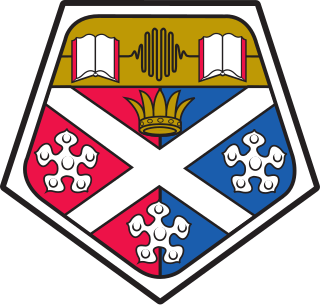
The University of Strathclyde is a public research university located in Glasgow, Scotland. Founded in 1796 as the Andersonian Institute, it is Glasgow's second-oldest university, having received its royal charter in 1964 as the first technological university in the United Kingdom. Taking its name from the historic Kingdom of Strathclyde, its combined enrollment of 25,000 undergraduate and graduate students ranks it Scotland's third-largest university, drawn with its staff from over 100 countries.

Jordanhill College was a higher education college in Jordanhill, Glasgow, Scotland. It opened as a teacher training college in 1921. The college merged with the University of Strathclyde in 1993, becoming its Faculty of Education. In 2012 all educational activities were moved to the John Anderson Campus and the campus closed.

The ancient universities of Scotland are medieval and renaissance universities that continue to exist in the present day. Together, the four universities are the oldest universities in continuous operation in the English-speaking world after the universities of Oxford and Cambridge. The majority of the ancient universities of the British Isles are located within Scotland, and have a number of distinctive features in common, being governed by a series of measures laid down in the Universities (Scotland) Acts 1858–1966. The Universities (Scotland) Act 1966 uses the term 'older universities' to refer to St Andrews, Glasgow, Aberdeen and Edinburgh. The four universities are generally regarded as the country's most selective, eminent and well-ranked universities.

John Anderson was a Scottish natural philosopher and liberal educator at the forefront of the application of science to technology in the industrial revolution, and of the education and advancement of working men and women. He was a joint founder of the Royal Society of Edinburgh, and was the posthumous founder of Anderson's College, which ultimately evolved into the University of Strathclyde.
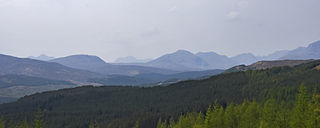
Established in 1889, the Scottish Mountaineering Club is a club for climbing and mountaineering in Scotland.

The Royal College of Science and Technology was a higher education college that existed in Glasgow, Scotland between 1887 and 1964. Tracing its history back to the Andersonian Institute, it is the direct predecessor institution of the University of Strathclyde. Its main building on George Street now serves as one of the major academic and administration buildings of the University of Strathclyde.

Henry Dyer was a Scottish engineer who contributed much to founding Western-style technical education in Japan and Scottish-Japanese relations.

Glasgow University Library in Scotland is one of the oldest and largest university libraries in Europe. At the turn of the 21st century, the main library building itself held 1,347,000 catalogued print books, and 53,300 journals. In total, the university library system including branch libraries now holds approximately 2.5 million books and journals, along with access to 1,853,000 e-books, and over 50,000 e-journals. The University also holds extensive archival material in a separate building. This includes the Scottish Business Archive, which alone amounts to 6.2 kilometres of manuscripts.

The Royal Philosophical Society of Glasgow is a learned society established in 1802 "for the improvement of the Arts and Sciences" in the city of Glasgow, Scotland. It runs a programme of lectures, starting its 222nd Series in October 2023. The Society formerly owned a building on Bath Street.

The Livingstone Tower is a prominent high rise building in Glasgow, Scotland and is a part of the University of Strathclyde's John Anderson Campus. The building was named after David Livingstone. The address of the building is 26 Richmond Street, Glasgow.
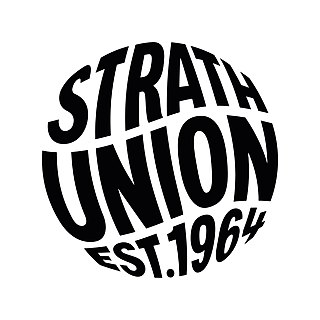
Strathclyde Students' Union (Strath Union) is the representative body for students of the University of Strathclyde, Glasgow, Scotland, since its founding in 1964.

The Strathclyde Institute of Education is one of the schools which make up the Faculty of Humanities and Social Sciences at the University of Strathclyde in Glasgow, Scotland. The Faculty itself is split up into the a number of Educational Departments which offer undergraduate and postgraduate courses.

The James Weir Building is an academic building in Glasgow City Centre, Scotland, United Kingdom and is part of the University of Strathclyde’s John Anderson Campus, situated between the Townhead and Merchant City districts of the area. It was completed in two stages between 1956 and 1964 as an extension to the Royal College Building. It is the third largest building on the John Anderson Campus in terms of overall floor area after the Royal College and the Curran Building. In addition, the stair and lift tower on the south east corner of the building is the second highest structure on the campus after the Livingstone Tower, and is highly visible throughout the eastern side of the city centre.
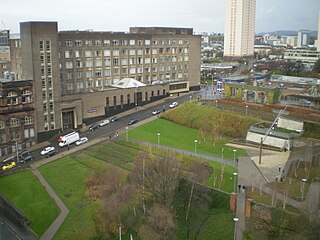
The John Anderson Campus, the main campus of The University of Strathclyde, is located in Glasgow, Scotland. The campus is self-contained in its own area which straddles the Townhead and Merchant City districts on the north eastern side of the city centre, while being only minutes from the M8 Motorway, George Square and is located midway between Queen Street Railway Station and High Street station on the North Clyde Line.
William Collins, Sons & Co., often referred to as Collins, was a Scottish printing and publishing company founded by a Presbyterian schoolmaster, William Collins, in Glasgow in 1819, in partnership with Charles Chalmers, the younger brother of Thomas Chalmers, the minister of Tron Church in Glasgow.

The University of Strathclyde Sports Union is an organisation coordinating sports for students at the University of Strathclyde. As such it is made up of many other smaller sports clubs, each participating in a particular sport. Its main centre of activity is the University of Strathclyde Centre for Sports and Recreation located on the John Anderson Campus of the University.
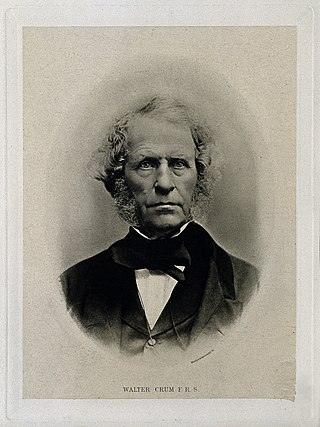
Walter Crum FRS (1796–1867) was a Scottish chemist and businessman. He became a Fellow of the Royal Society in 1844.

The Strathclyde Telegraph is a student newspaper which was founded in 1960 and is edited, written and produced by students at the University of Strathclyde. It is the University of Strathclyde’s only printed student newspaper and is produced on campus by students from start to finish. It aims to report on the activities of Union groups and elected officers and in so doing inform Strathclyde students about their Union as well as a variety of features and content relating to culture and the arts.

The Faculty of Engineering is one of the four faculties which make up the University of Strathclyde in Glasgow, Scotland. The faculty contains multiple departments offering many different undergraduate and postgraduate courses. These range from BEng, MEng and MSc courses to doctorates throughout the faculty.
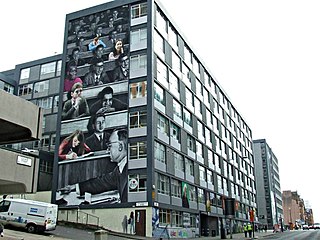
The Graham Hills Building is a major building on Strathclyde University's John Anderson Campus, located in Glasgow, Scotland. The structure, originally known as Marland House, was completed in 1959 by the General Post Office (GPO) and was acquired by the university from the GPO's successor – British Telecom (BT) in 1987.






















